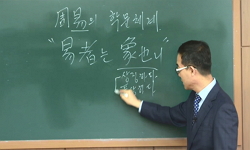Yongdoseo and Guimunwon are described in 「Bokgeo(卜居, fix abode)」 of 『Sanlimkyengje(山林經濟)』」 written by Manseon Hong. This record is a unique garden conceptual idea applying the principles of Hetu(河圖) and Luoshu(洛書), fancif...
http://chineseinput.net/에서 pinyin(병음)방식으로 중국어를 변환할 수 있습니다.
변환된 중국어를 복사하여 사용하시면 됩니다.
- 中文 을 입력하시려면 zhongwen을 입력하시고 space를누르시면됩니다.
- 北京 을 입력하시려면 beijing을 입력하시고 space를 누르시면 됩니다.

상수(象數)원리를 정원구성에 적용한 용도서(龍圖墅)와 귀문원(龜文園) = Yongdoseo(龍圖墅) and Guimunwon(龜文園) which Applied a Sangsu(象數) Principle on Garden Composition
한글로보기https://www.riss.kr/link?id=A60125815
- 저자
- 발행기관
- 학술지명
- 권호사항
-
발행연도
2012
-
작성언어
-
- 주제어
-
KDC
500
-
등재정보
KCI등재
-
자료형태
학술저널
- 발행기관 URL
-
수록면
119-129(11쪽)
- 제공처
-
0
상세조회 -
0
다운로드
부가정보
다국어 초록 (Multilingual Abstract)
Yongdoseo and Guimunwon are described in 「Bokgeo(卜居, fix abode)」 of 『Sanlimkyengje(山林經濟)』」 written by Manseon Hong. This record is a unique garden conceptual idea applying the principles of Hetu(河圖) and Luoshu(洛書), fanciful gardens which have not been actually constructed. Here, two garden types were concretely described respectively, however the underlying meaning therein cannot be apprehended without exact understanding about Sangsu studies. Therefore, the purpose of this study is to illuminate the meaning contained in Garden illustration and the historical meaning of landscape therein through considering this text. To achieve the purpose of this study, the writer and the compiler who are the background of this writing and the outline of Sangsu studies were investigated. Also, the principles of Saengsu(生數), Seongsu(成數), Yin Yang(陰陽), Four Bodies(四象), Palgwedo(八卦圖), etc. which are in Hetu and Luoshu were considered. The result of this study went through this research process is summarized as follows. First, Hetu Luoshu are conceptual definitions which wholly abstracted the basic propositions of Sangsu philosophy such as the universe change principle, etc., while Yongdoseo and Guimunwon can be said to be operational definitions which apply those as garden composition principle, enabling to experience the meaning contained therein concretely and explain it in a replicable way. This attempt is a unique example, unprecedented in China as well. Second, as a living space, garden was selected as a means to concretize operational definitions about the meaning of Hetu Luoshu, and as the property to reproduce the bearings concept, the location and the number, etc. of Hetu Luoshu, Taegukjeong(太極亭), Shipjagak(十字閣), Dondae(墩臺), well, pond as well as various kinds of trees were used. Third, the main motif of Yongdoseo and Guimunwon is the relation between Apriority(先天) and Posterior(後天), and the relation between Constitution(體) and Use(用) of Hetu and Luoshu respectively. That is, Yongdoseo planted evergreen trees such as Shipjangcheong(十長靑) in order to symbolize the universe creation principle which Hetu stands for, i.e. silent, harmonious, orderly and win-win image. In Guimunwon, flowering trees(花木) and fruit trees(果木) were planted freely to express the change of Posterior which Luoshu stands for, that is, dynamic, disharmonious, disorderly, incompatible(相剋) and changing image. The effects intended to be attained through such planting were, ``freshness and cheerfulness(淸爽)`` of Yongdoseo and ``splendidness`` of Guimunwon respectively. Sangsu studies based on Hetu and Luoshu is a unique thinking system to the Orient which came from the accumulated wisdom of several scholars from various schools through a long period since ancient times. Therefore, the concept and the theory thereof are profound and huge, and its viewpoints of interpretation are diverse. It is a limit of this study that more in-depth and various consideration was not performed. As a further research project, more empirical study of Orientalism such as Sangsu studies, etc. inherent in Traditional Garden is necessary.
동일학술지(권/호) 다른 논문
-
생태적 유역관리 도구로써 마을방죽의 수질정화 효율성 고찰
- 한국전통조경학회
- 안병철 ( Byung Chul An )
- 2012
- KCI등재
-
당(堂)과 오름을 중심으로 한 제주도 해안,중산간마을의 공간 특성 사례연구
- 한국전통조경학회
- 최재웅 ( Jai Ung Choi )
- 2012
- KCI등재
-
서울북촌 가로경관의 시각적 이미지 특성에 관한 연구 -삼청동 35번지,가회동 31,11번지를 중심으로-
- 한국전통조경학회
- 김동찬 ( Dong Chan Kim )
- 2012
- KCI등재
-
부산 상해거리 상점 전면부 경관요소의 유형적 분석과 중국 전통 경관이미지의 재현 수법에 관한 연구
- 한국전통조경학회
- 박향화 ( Xiang Hua Piao )
- 2012
- KCI등재




 KISS
KISS






